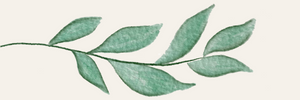Afro-Colombian Day


Suitable for: Grade P-3
In this lesson, students learn about Afro Colombian culture. They will engage in activities that help them understand the significance of this celebration for Afro descendants in Colombia.
Activity 1
During May in Colombia the whole country comes together to commemorate and support Afro Colombian culture as well as to work towards equality. This special date was first celebrated in 2001, in order to honor Afro population, remember their relevance to Colombian history, and of course give recognition to all the artistic, academic, and social contributions made by Afro Colombians.
This special month is celebrated through lectures, art, food and typical folklore representative of the Afro communities in Colombia. Therefore, music and dance are essential for this event since they tell us the history, traditions, pain, fight and joy that this population has faced throughout the years.
Delia Zapata Olivella was one of the most important exponents of Afro Colombian folklore, she was a professional dancer and teacher. Delia tried to give more visibility to dances from the Caribbean and Pacific coasts of Colombia and spread her love for this folklore to the rest of the world. She was an also expert dancer with rhythms like Currulao, Bullerengue, Cumbia and La Tambora.
- Go through Annex 1 with students and ask the following questions:
- Where was she born?
- What was Delia's passion?
- Can you name some of the rhythms she was an expert at dancing? Why do you think she is so important to Afro Colombians?
- Do you know somebody that shares their culture through dance? Tell us about it.
Activity 2
Show students the video below where children from Bolivar are dancing La Tambora
1. Using Annex 2 , students can decorate the typical gowns for La Tambora, they can find inspitration in the video or then can also create their own version of it
2.Using Annex 3,and the video, practice the basic steps for dancing La Tambora. You can record the results and share your experience in our social media.
2.Using Annex 3,and the video, practice the basic steps for dancing La Tambora. You can record the results and share your experience in our social media.
Extension Activity
El Guasá is a percussion instrument typical from Colombia and Ecuador. It is mainly played for rhythms such as, Currulao, Chirimia, and La Tambora. It is made out of bamboo and some dried corn/achira seeds that modify the sound depending on their size; when played, it emulates the sound of rain and it can be used alongside many instruments.
1. Show students this video below where children from Bolivar are dancing La Tambora
2. Go through the instructions in Annex 4 , and ask students to create the own El Guasá. They can decorate it and they come up with a rhythm to play it.
1. Show students this video below where children from Bolivar are dancing La Tambora
2. Go through the instructions in Annex 4 , and ask students to create the own El Guasá. They can decorate it and they come up with a rhythm to play it.
Developed by the team at Meg to be used for the Meg Language & Culture Program
Copyright 2021
Copyright 2021